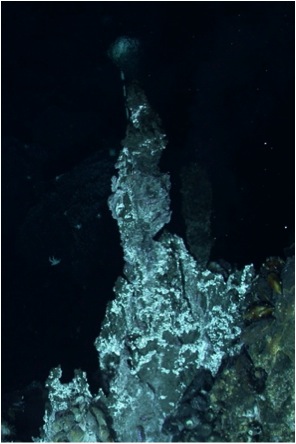

If you want to know why we care, we’ll give you two reasons. First, if the formation of this micro-aggregate structure turns out to be common then it means the currently excepted conceptual model of “plume” formation (the two processes just described) is incomplete. It doesn’t explain the complete formation process and it doesn’t account for the different characteristics of a micro-aggregate versus a bare mineral particle. That’s important because a mineral particle covered in ‘goo’ doesn’t react with seawater the same way a bare mineral particle would; and, a micro-aggregate sinks much more slowly than an individual mineral particle – and can be transported much further away from a vent than they otherwise would. Second, particle formation in vent plumes is an extreme example of a more general process that happens in many other parts of the environment: rivers, estuaries, the surface ocean, and the middle ocean depths – a more general process that is a very important factor determining how chemicals move through the hydrosphere (scientific jargon for all the water on the planet). Plume particles are quite distinct from the particles that form in these other cases. But scientifically that makes them very useful because they may highlight parts of the particle formation process (microbial action for instance) that are less prominent in the other cases. Thus by studying these ‘plume’ particles we have the chance to learn something new and true for particle formation in all these other places.
*We are Chip Breier, Brandy Toner, Greg Dick, Karthik Anantharaman, Jason Sylvan, Sarine Fakra, Matthew Marcus, Katrina Edwards, Sheri White, and Chris German.


